
Multi - response optimization of injection molding process parameters using moldex 3DLe Van CanhTran Dai Nghia UniversityABSTRACTThe research is an approach to multi - response optimization of injection molding process parameters. In this author uses Moldex 3D to analyse the injection molding process. The experiments are plotted using L9 orthogonal array, which is generated with the help of DOE module in Moldex3D software. The process parameters melt temperature, packing time, Max. packing pressure are optimized by multiple response consideration of max cooling time and warpage. With the help of Moldex 3D software, the desirability function analysis optimal values of process parameters are obtained. The analysis shows optimized process parameters combination of melt temperature, packing time and max- packing pressure which are o250 C, 6s, and 140 Mpa respectively. The confirm run results show that by this injection molding machine performance can be improved. However, the future work should be needed to analyze multi cavity molding for the part which is more appliable before we can make the real run.Keywords: Injection molding, Moldex 3D, multi - response optimizationThere are numerous approach had been developed which present the soluon related to opmizaon of process parameter. Ahmad et.al focused on the warpage minimizaon. They selected the ABS material and process parameters melt temperature, mould temperature, packing pressure, packing me for study. By considering Taguchi method, L18 orthogonal array experiments were planned. They found that as melt temperature, mould temperature increased warpage increased and packing pressure and packing me increased warpage is minimized [1].Akbarzadeh et.al considered the effect of warpage and shrinkage with the help of Taguchi and ANOVA approach and select polypropylene (PP) and polystyrene (PS) material. The input parameters were melt temperature, injecon pressure, packing pressure and packing me. They found that melt temperature and packing pressure were effecve process parameter amongst the melt temperature, packing pressure and packing me [2]. Ghazali et.al studied effects of parameters involved in producing Nylon PA66 side arms that lead to this warpage. For this they considered melt temperature, filling me, packing pressure and packing me as process parameters. Simulaon was also done with the help of Mold flow soware. They found melt temperature and packing me were most significant parameters [3]. Villarreal et.al considered simple rectangular plaque for cycle me and warpage as response factor. They consider melt temperature and packing pressure as the two process factor. Aer opmizaon of process parameter they saw that melt temperature contribute a lot in cycle me and warpage minimizaon [4].Chi-Wei Su et.al were carrying out research to opmize process parameters and adapve quality monitoring injecon molding process for materials with different viscosity. In this study, the viscosity index, peak pressure, and clamping force peak are characterized as quality monitoring parameters, which guide process adjustments and enhance the stability of the control system. Based on the results of preliminary experiments, the appropriate V/P switchover point and clamping force were determined by analyzing the peak pressure and clamping force for materials with varying viscosies. The viscosity index and peak pressure were found to be strongly correlated with the weight of the injecon molded parts for different materials. These characteriscs, along with the 109Hong Bang Internaonal University Journal of ScienceISSN: 2615 - 9686Hong Bang Internaonal University Journal of Science - Vol.4 - June 2023: 109-116DOI: hps://doi.org/10.59294/HIUJS.VOL.4.2023.393Corresponding Author: Le Van CanhEmail: canhle195@gmail.com1. INTRODUCTION

110Hong Bang Internaonal University Journal of ScienceISSN: 2615 - 9686Hong Bang Internaonal University Journal of Science - Vol.4 - June 2023: 109-116clamping force peak, were defined as quality monitoring parameters for guiding adjustments and increasing process stability in the presented control system. By combining nozzle pressure curve-based adapve process control with clamping force peak monitoring, the weight variaon of injecon molded parts was reduced. The coefficient of variaon of product weight for materials with low to high viscosies was decreased to 0.031%, 0.020%, and 0.024%, respecvely, as demonstrated by the experiments [5].Gurjeet Singh et.al studied the mul - response opmizaon of injecon moulding process parameters to reduce cycle me and warpage. The injecon molding process parameters, including injecon pressure, melt temperature, packing me, and packing pressure, were opmized using a mul-response approach considering cycle me and warpage. Aer conducng a desirability funcon analysis and using composite desirability values, the opmal values for the process parameters were determined. The experimental results demonstrate that this injecon molding machine performance can be improved, as evidenced by the successful producon of injecon molded products using virgin polypropylene through this approach. Because the error of experiments were found approximately of 15%, the model is fit for the cycle me and warpage [6].There were a number of researchers work on factors that have high possibility influencing on cycle me and warpage. This study invesgates three factors: melt temperature, packing me, and max packing pressure which are considered to have beer responses of max cooling me and warpage.2. DESIGN OF EXPERIMENTS2.1. Base runa. Model informaonIn this study, the author chose a plasc folk as a part to analysis the injecon molding process. The model's thickness is in range from 0.15 mm to 3.865 mm.Figure 1. Model informaonAer choosing gate locaon, material and analyzing the cooling system more suitable for the project, a base run for DOE was made. This run would have informaon as follow:Figure 2. Model details and mesh parameters

111Hong Bang Internaonal University Journal of ScienceISSN: 2615 - 9686Hong Bang Internaonal University Journal of Science - Vol.4 - June 2023: 109-116b. Material informaonFrom the material bank of Moldex 3D, we can easily take necessary informaon such as, viscosity, PVT charts, and mechanical properes of material. The material we chose is ABS POLYFLAM RABS 90950 UV5.Figure 3. Viscosity feature of materialFigure 4. PVT chart of materialFigure 5. Thermal properes of material

112Hong Bang Internaonal University Journal of ScienceISSN: 2615 - 9686Hong Bang Internaonal University Journal of Science - Vol.4 - June 2023: 109-116For the flow rate set up, typically, a higher injecon rate is preferable as it allows a larger volume of plasc material to flow through the mold in a shorter duraon, prevenng incomplete filling caused by melt flowability loss due to excessive cooling at low injecon speeds in thinner secons. However, a high injecon rate may result in thermal decomposion of plasc with poor heat stability due to excessive shear heang, oen resulng in aesthec defects like yellowing, brown-black stripes, and other appearance-related issues [7]. As shown in Figure 6 for the part, at the beginning, the melt front has a smaller inial cross secon, corresponding to a flow rate of 30%. As the cross secon gradually expands, the flow rate transions to a faster 79% in the second stage. In the laer half of the injecon process, the cross secon begins to decrease, resulng in a lower flow rate of 59%, which further decreases to 10% before the mold cavity is completely filled.2.2. DOE seng upBy applying the Taguchi method, the orthogonal array has been highly ulized in engineering analysis and consists of a design of experiments with the objecve of acquiring data in a controlled way, to take informaon about the behavior of a given process. The effects of several process parameters can be determined effecvely by carrying out matrix experiments based on the Taguchis orthogonal design [8]. In this project, the process parameters ranges recommended from Moldex3D soware. L9 orthogonal array for three parameters and three levels were selected. Aer we have the result from base run, we choose the control factors and quality factors for DOE set up. For the melt temperature, there were three levels oooof 220 C, 235C and 250C respecvely. While the packing me was set with 4.75s, 5.3s and 6s, the max. Packing pressure was input of 140MPa, 150Mpa and 160Mpa respecvely.c. Process condionsFor seng process parameters, I chose the machine mode 1 in Moldex 3D, with all the set up as below:Figure 6. Flow rate profile and packing pressure profile of the runFigure 7. DOE set up

113Hong Bang Internaonal University Journal of ScienceISSN: 2615 - 9686Hong Bang Internaonal University Journal of Science - Vol.4 - June 2023: 109-116As shown in Figure 9 and Figure 10, melt temperature and packing me have most influence on the max cooling me, while max packing pressure has less affecon on it.3. RESULT AND DISCUSSION3.1. Experiment resultsAer having the matrix experiment design, Moldex 3D would run 9 processes applying each set of parameters, then it shown the results of these runs (shown in Figure 8).Figure 8. Experiment resultsFigure 9. Quality response: cooling_Max cooling meFigure 10. S/N rao response: cooling_Max cooling me

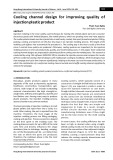
![Giáo trình Động vật hại nông nghiệp và nông sản (Nghề Bảo vệ thực vật Trung cấp) - Trường Trung cấp nghề GDTX Hồng Ngự [Mới nhất]](https://cdn.tailieu.vn/images/document/thumbnail/2024/20240417/khanhchi0912/135x160/4741713340904.jpg)

![Giáo trình sản xuất cây giống bằng hạt [chuẩn nhất]](https://cdn.tailieu.vn/images/document/thumbnail/2013/20131112/lengocln/135x160/1041384246790.jpg)

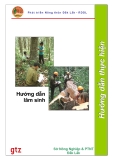

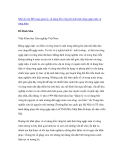

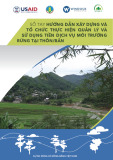



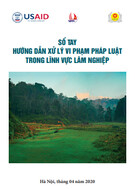





![Hỏi đáp pháp luật lâm nghiệp: Tài liệu [mới nhất/chuẩn nhất]](https://cdn.tailieu.vn/images/document/thumbnail/2025/20250711/vijiraiya/135x160/626_tai-lieu-hoi-dap-ve-phap-luat-lam-nghiep.jpg)



